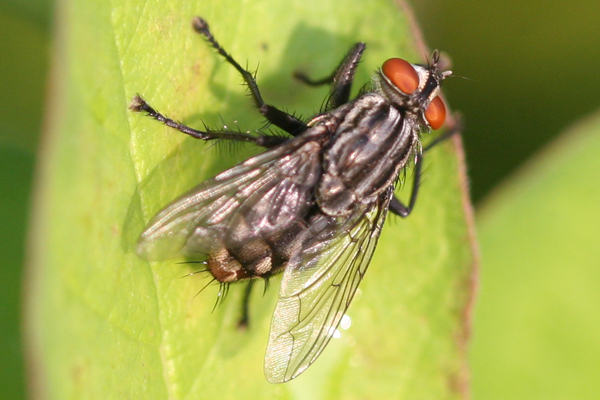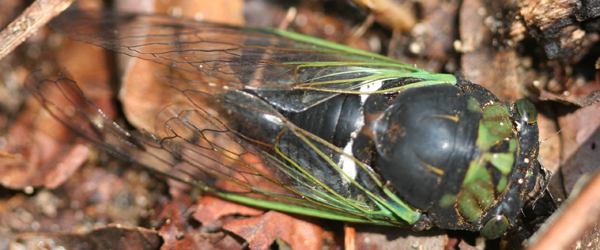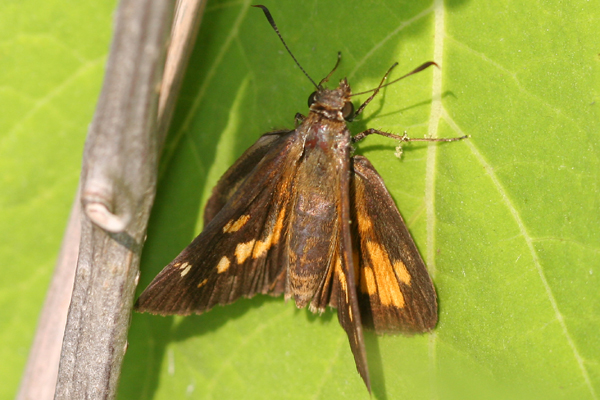Monday was a well-spent vacation day. Why? Well, Charlie was in town and we went birding at Jamaica Bay! I’ll leave it to Charlie to tell the tale of the birds we saw and didn’t see and stick to three of the insects that we spotted: a fly, a butterfly, and a cicada. Charlie also got some pretty good shots of wasps, but that will also be for another post. I will say that we spent many hours birding the preserve and saw a total of 69 species of birds and I am still exhausted from the sun, the walking, the bugs, and putting up with Charlie’s whinging about all three (that last bit there wasn’t really true: if anyone was whinging it was me).
The fly is one of the roughly 250 species in the family Sarcophagidae, or flesh flies, north of Mexico, according to Kaufman’s Field Guide to the Insects of North America. I know by its red eyes and red-tipped “tail” that it is of the genus Sarcophaga, but that only narrows the options down to 79 species north of Mexico. I have no idea of its specific identity but I was pleased that I got such a cool-looking shot. If anyone out there is an expert on these flies please feel free to identify it in the comments.
Insect number two is a cicada, or, more specifically, a Swamp Cicada (Tibicen chloromera). They are, again according to Kaufman, common across the eastern United States, and are one of many “annual cicadas.” That is, every year some emerge as adults, but an individual can take from two to five years to reach maturity. If you hear an insistant buzzing coming from trees during the hottest days of summer in the eastern United States, odds are the bug below is the culprit.
When I spotted the cicada I at first thought it was dead, and, after taking a couple of pictures, picked it up by its wings to show to Charlie. Well, the cicada was not dead and I quickly let go and off it flew, but not before startling the heck out of me!
The final insect for the day is a butterfly, and, even more impressively, provided I acutally managed to not muck up the identification, a skipper. I certainly hope I am correct in calling it a Peck’s Skipper (Polites peckius) but, well, I am no butterfly expert and that goes double for skippers! I think I am in safe territory though, as my butterfly field guide, Butterflies through Binoculars, indicates that it is one of the most common skippers throughout its range. Does anyone care to confirm or contradict my identification?
The more I learn about insects the more I realize I don’t know. I do know, however, that they are fascinating and fun to focus on when the feathered fliers are fizzling.
















According to Kaufman’s butterfly guide, the diagnostic marks for Peck’s Skipper are on the underside of the wing. So, I’m not sure.
John,
Try Broad-winged Skipper